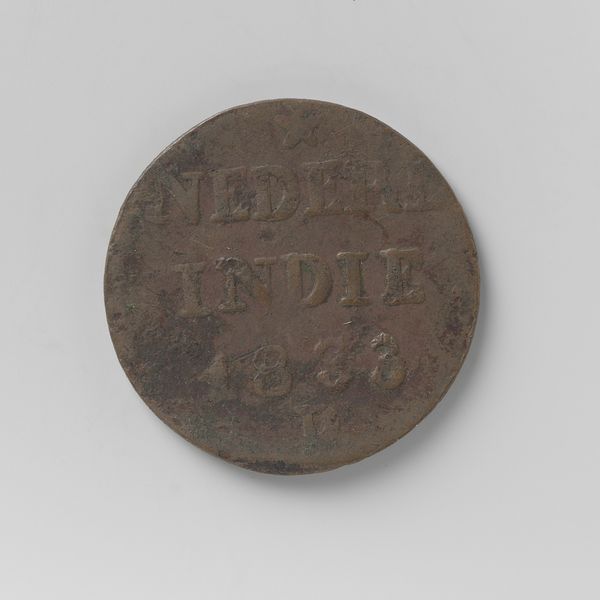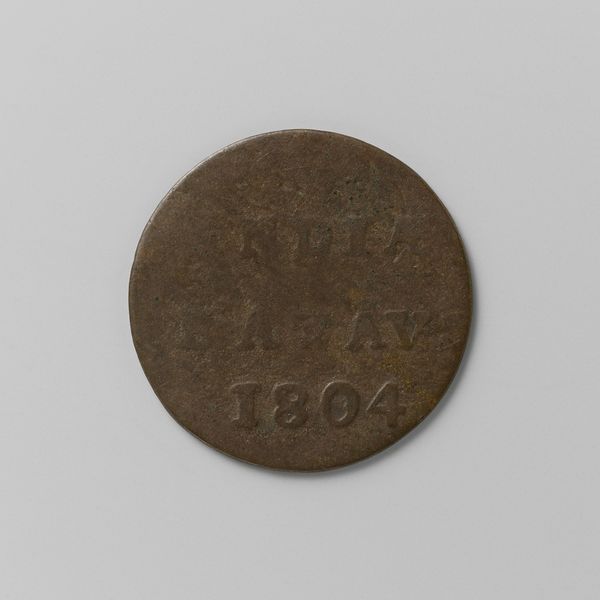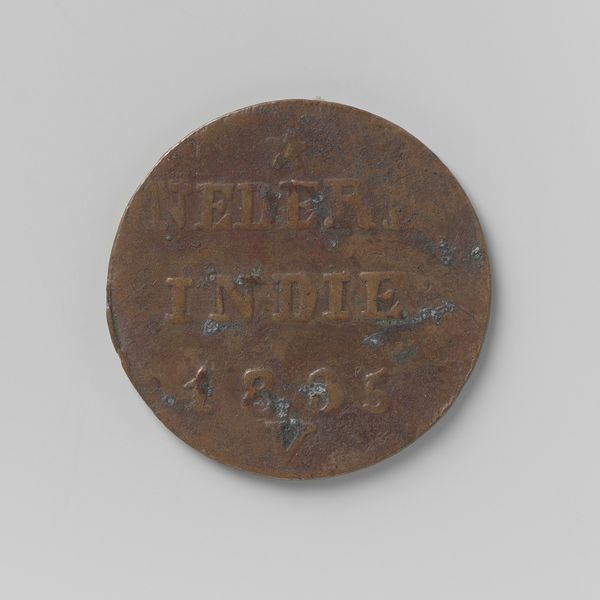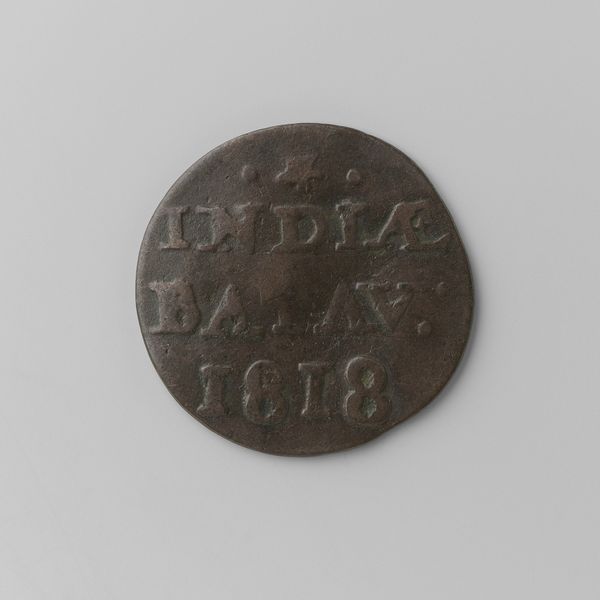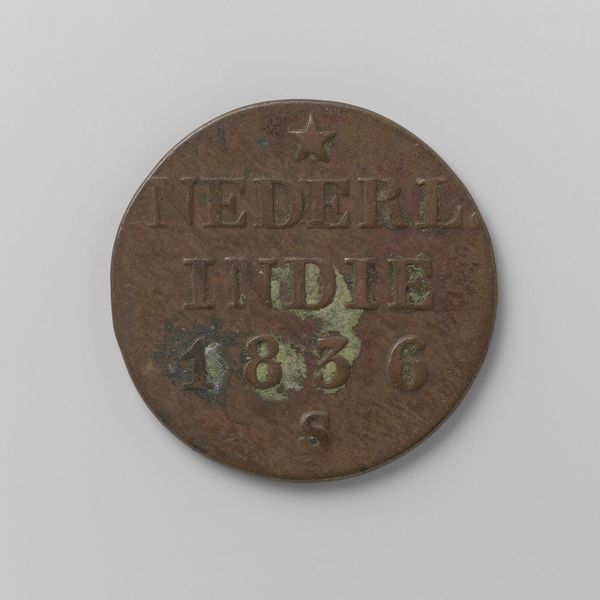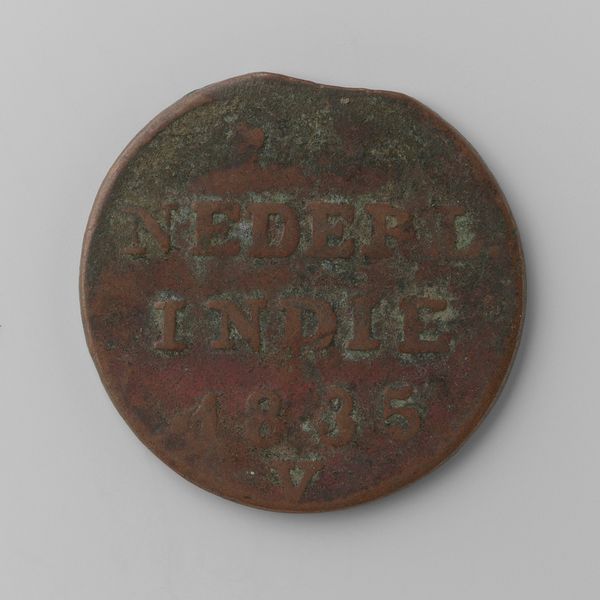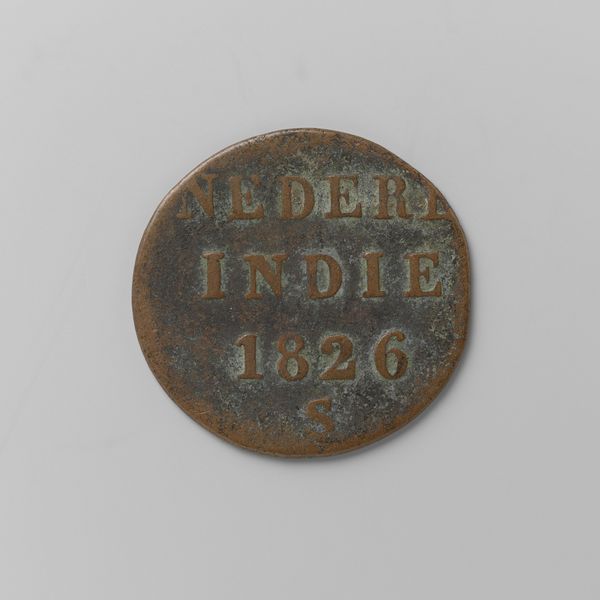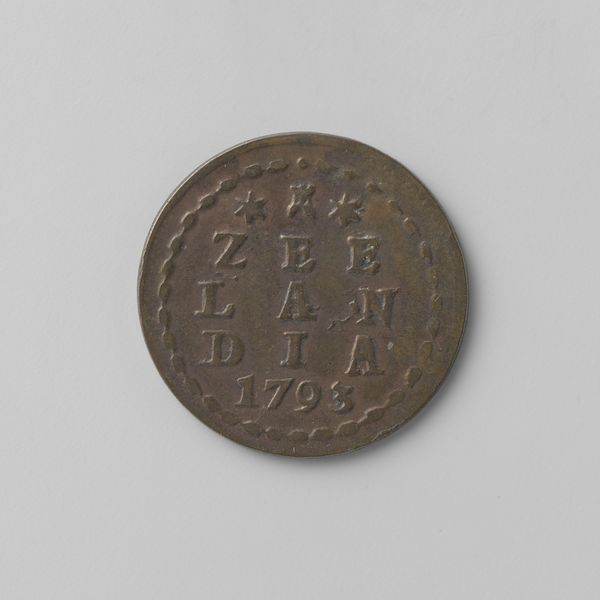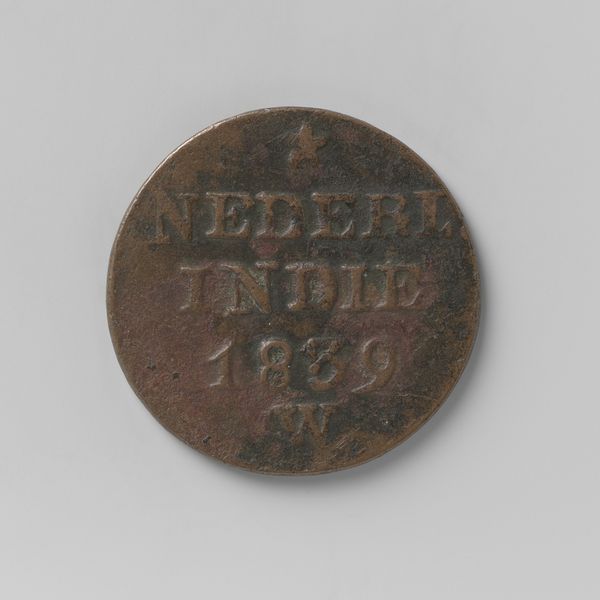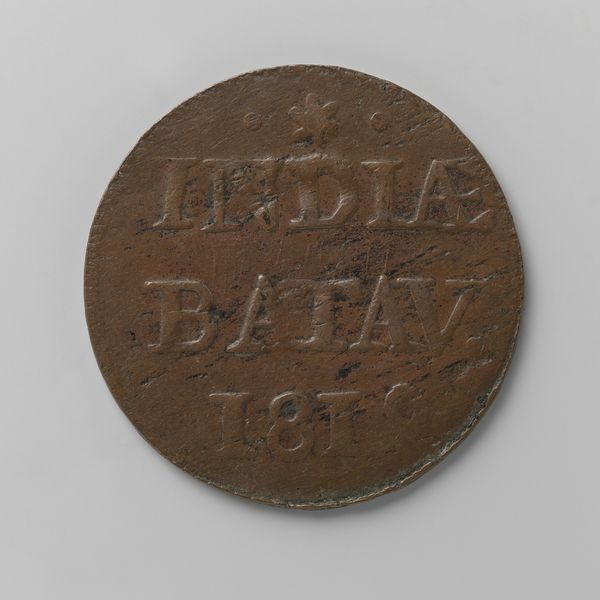
print, metal, embossing
# print
#
metal
#
asian-art
#
embossing
#
embossed
Dimensions: diameter 2.6 cm, weight 6.13 gr
Copyright: Rijks Museum: Open Domain
Editor: This is a ½ stuiver coin from the Dutch East Indies, dated 1821. It’s metal, a rather simple design featuring embossed text and a star. I find its age and the history it represents quite striking. What do you see in this piece? Curator: Well, I see more than just a simple coin. It's a tangible remnant of Dutch colonialism, a stark reminder of the economic exploitation and power dynamics that defined that era. Consider how this object circulated in the Dutch East Indies. Who benefited from its use, and at whose expense? The "simplicity" of its design actually masks a complex system of control. The embossed text and Willem I's profile are asserting Dutch authority. What stories do you think it could tell us about identity and resistance? Editor: I hadn't considered the power dynamics so directly. So the coin, in effect, becomes a symbol of oppression, despite its small size and value? Curator: Precisely! Its presence in the Rijksmuseum invites us to confront the legacy of colonialism and its enduring impact on both the Netherlands and Indonesia. Coins like these underpinned a global system where some prospered, while others were subjugated. How do you feel knowing that it’s considered Asian art in the museum metadata? Editor: That's a really complex thought. It challenges me to consider the Asian experience of colonization. I initially saw it as an object with just a historical value, not something as fraught with the legacy of oppression. Curator: Exactly, that's why engaging with the social context is crucial. Editor: I’ll definitely look at currency differently from now on. Thanks. Curator: And I am leaving with a reinforced vision to encourage an interrogation into the historical contexts, rather than focusing on aesthetics.
Comments
No comments
Be the first to comment and join the conversation on the ultimate creative platform.


